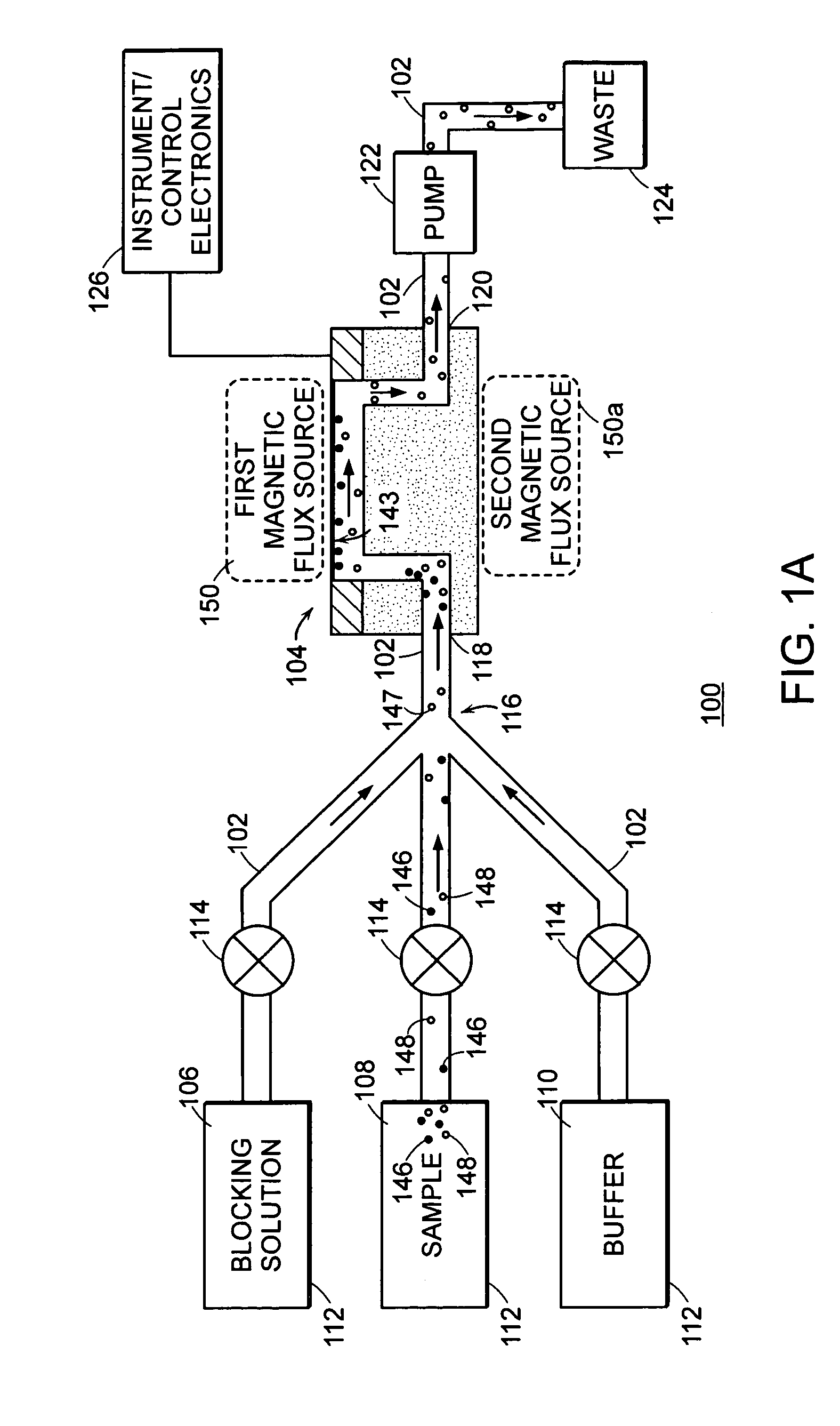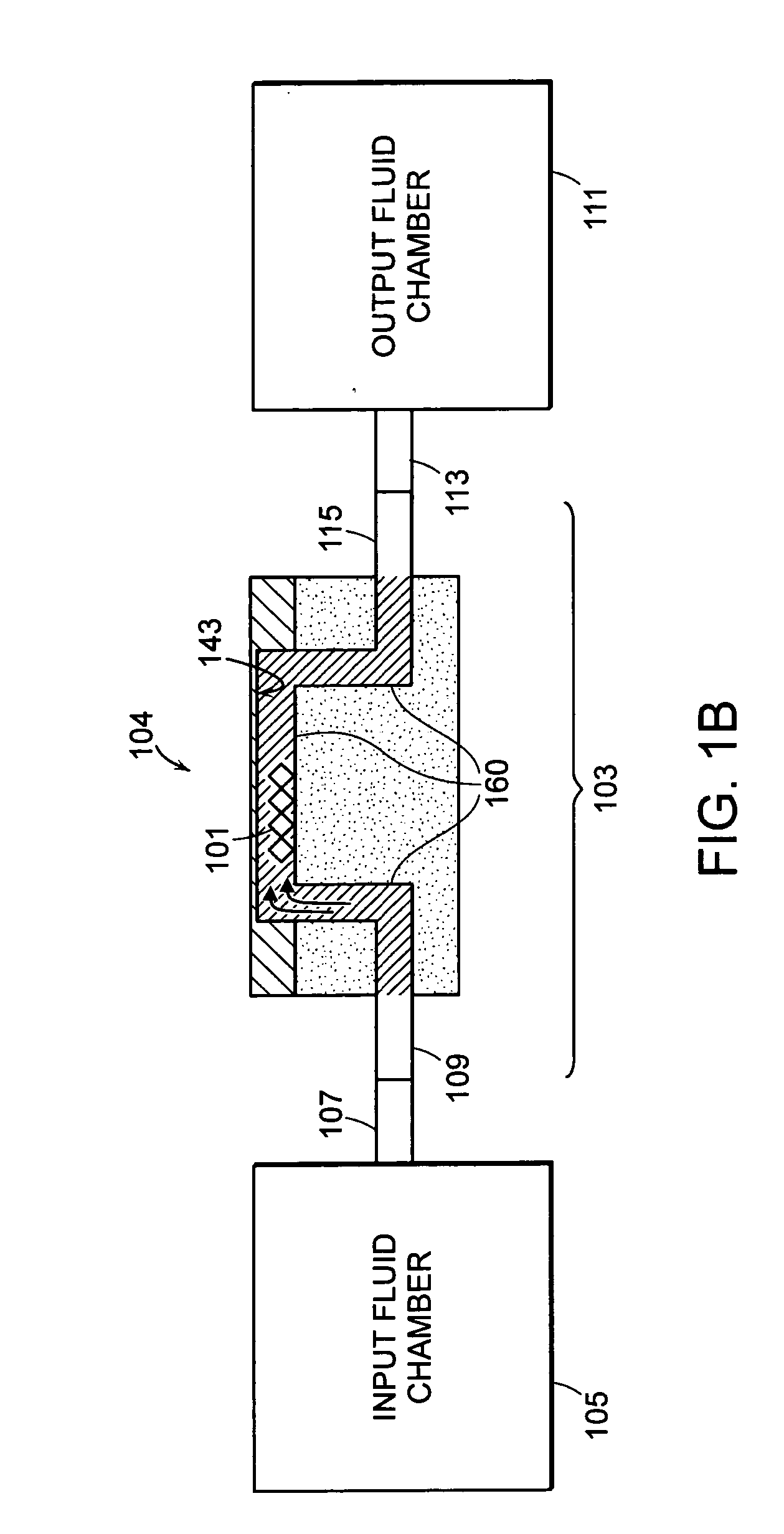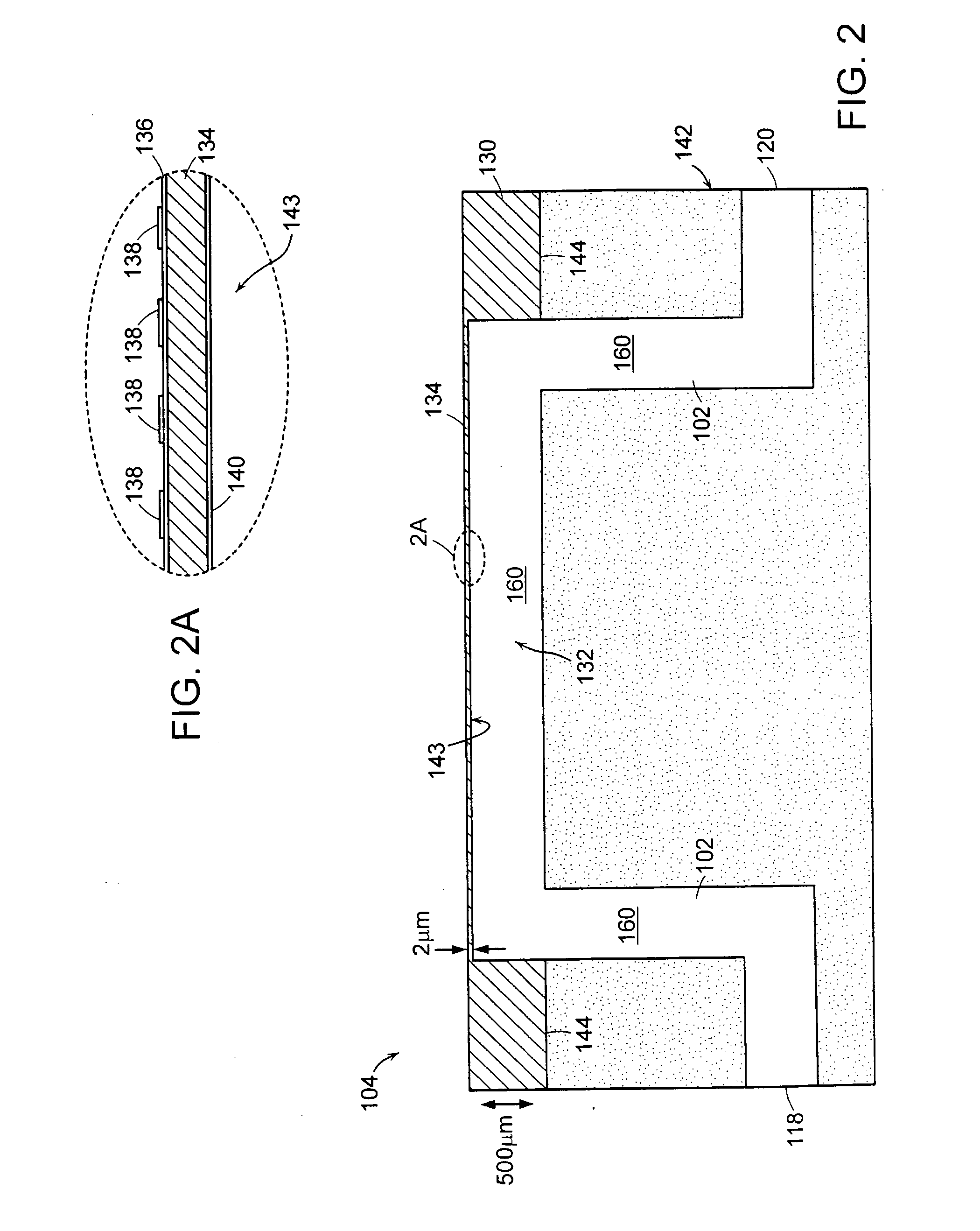Methods and apparatus for detecting cardiac injury markers using an acoustic device
a technology of acoustic device and cardiac injury, which is applied in the direction of analytical using chemical indicators, laboratory glassware, instruments, etc., can solve the problems of difficulty in accurately specifying a proper treatment, difficulty in a doctor to accurately specify a treatment, and general concentration problems, so as to reduce the level of analyte, avoid delays, and increase patient compliance
- Summary
- Abstract
- Description
- Claims
- Application Information
AI Technical Summary
Benefits of technology
Problems solved by technology
Method used
Image
Examples
example i
Generalized Method for Capture Agent Functionalization of a Surface of a Flexural Plate Wave Device
[0143] 1. Deposit gold onto the surface (e.g., sensor surface 143) of the flexural plate wave device 104 and clean the gold surface 143 with, for example, oxygen plasma.
[0144] 2. An ideal surface chemistry for the surface 143 of the gold is one that provides 1) non-specific binding resistance and 2) reactive groups located on the surface for covalent attachment of capture agents. An exemplary surface chemistry for the surface 143 of the gold is a self-assembled monolayer (SAM) of alkane thiols. The SAM can be formed from a mixture of two alkane thiols; one terminated with a reactive group for subsequent covalent attachment of capture agents, and one terminated with a non-reactive group. By way of example, a mixture of EG3-OH (EG3) and EG6-OCH2COOH (EG6) terminated C11-alkane thiols may be used for this purpose. In one embodiment, the flexural plate wave device 104 (particularly the s...
example ii
Detecting E. coli O157:H7 In Ground Beef using, for Example, the Method of FIG. 3 (FIG. 5 Contains Data Representative of Various Concentrations of E. coli)
[0146] 1. Prepare an analyte sample containing E. coli O157:H7 with a concentration greater than about 100 cfu / mL.
[0147] a. Concentrate the analyte sample in solution by performing an immunomagnetic separation. A variety of commercial instruments (e.g., Pathatrix by Matrix Microsciences and Bead Retriever by Dynal Biotech) or manual methods may be used to perform the immunomagnetic separation. An exemplary manual method involves:
[0148] b. Resuspend magnetic beads coated with E. coli antibody (e.g., Dynabeads anti-E. coli O157, available from Dynal Biotech) until the magnetic bead pellet in the bottom of the tube disappears. Place a microcentrifuge tube in the rack (e.g., a Dynal MPC-S) of a magnetic plate. Pipette 1-20 μL of magnetic bead stock solution into the tube (the volume of magnetic bead stock selected is based on desi...
example iii
Detecting Prostate Specific Antigen (PSA) In Human Blood Serum using, for Example, the Method Steps of FIG. 3.
[0167] 1. Prepare an analyte sample containing human serum obtained by centrifugation from a human blood sample.
[0168] 2. Concentrate the analyte sample in solution by performing an immunomagnetic separation. A variety of commercial instruments (e.g., Pathatrix by Matrix Microsciences and Bead Retriever by Dynal Biotech) or manual methods may be used to perform the immunomagnetic separation. An exemplary manual method involves:
[0169] a. Resuspend magnetic beads coated with PSA antibody (e.g., Dynabeads anti-PSA, available from Dynal Biotech) until the magnetic bead pellet in the bottom of the tube disappears. Place a microcentrifuge tube in the rack (e.g., a Dynal MPC-S) of a magnetic plate. Pipette 1-20 μL of magnetic bead stock solution into the tube (the volume of magnetic bead stock selected is based on desired final bead concentration).
[0170] b. Add 1 mL of the anal...
PUM
 Login to View More
Login to View More Abstract
Description
Claims
Application Information
 Login to View More
Login to View More - R&D
- Intellectual Property
- Life Sciences
- Materials
- Tech Scout
- Unparalleled Data Quality
- Higher Quality Content
- 60% Fewer Hallucinations
Browse by: Latest US Patents, China's latest patents, Technical Efficacy Thesaurus, Application Domain, Technology Topic, Popular Technical Reports.
© 2025 PatSnap. All rights reserved.Legal|Privacy policy|Modern Slavery Act Transparency Statement|Sitemap|About US| Contact US: help@patsnap.com



